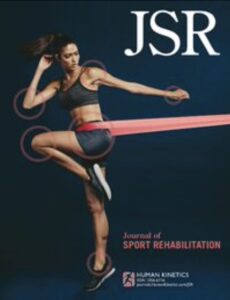Publications

The Effects of Vibration Exposure on Lower-Limb Extensor Muscles’ Stiffness, Elasticity, and Strength Responses in Untrained Young Individuals: A Randomized Controlled Trial
Authors: Filiz Basol 1, Ilke Kara 2, Tulay Cevik Saldiran 3
Affiliations:
- Department of Physiotherapy and Rehabilitation, Faculty of Health Sciences, Istanbul Okan University, Istanbul, Turkey
- Department of Physical Therapy and Rehabilitation, Institute of Health Sciences, Dokuz Eylul University, Izmir, Turkey
- Department of Physiotherapy and Rehabilitation, Faculty of Health Sciences, Bitlis Eren University, Bitlis, Turkey
Journal: Journal of Sport Rehabilitation - January 2023, Volume 32, Issue 4, Pages 415-423 (DOI: 10.1123/jsr.2022-0067)
-
Field & Applications:
- Treatment evaluation
- Muscle development / Performance
Objectives: The whole-body vibration (WBV) effects on muscle strength show inconsistent results. Moreover, there is no study about the WBV effect on stiffness, elasticity, and muscle strength. Therefore, the study aimed to examine the effect of WBV exposure with static squat posture on the stiffness, elasticity, and strength of the lower-limb extensor muscles.
Material and Methods: Forty healthy untrained young adults were divided into WBV and control groups. The experimental group received WBV exposure on 2 nonconsecutive days of the week, for 6 weeks. The MyotonPRO device was used for the assessment of the knee extensor and the ankle dorsiflexors’ stiffness and elasticity. Isometric muscle strength was evaluated with a hand-held dynamometer. All measurements were done by the same assessor at baseline, and the following 6 weeks.
Results: Significant group-by-time interactions were found for the elasticity scores of the right (d = 0.84, P = .01) and left (d = 0.77, P = .02) ankle dorsiflexors. Similar to the elasticity measurements, significant group-by-time interactions were observed in the muscle strength scores of the right (d = 0.45, P = .046) and left (d = 1.25, P < .001) ankle dorsiflexors. No significant effects were observed in any of the evaluated muscle stiffness measurements (P > .05), and there was no significant group-by-time interaction in knee-extensor muscle strength and elasticity scores (P > .05).
Conclusions: The study results indicate that if the ankle dorsiflexor strength and elasticity are desired to be increased, the 6-week WBV exposure in a static squat posture can be used in healthy individuals.
Keywords: biomechanics, knee, ankle, muscle activation
In conclusion, WBV training with static squat posture was found effective in improving the elasticity and strength of ankle dorsiflexors in healthy untrained individuals. But this WBV program does not affect the stiffness of the ankle extensors and the stiffness, elasticity, and strength of the knee-extensor muscles. Therefore, we can say that if the ankle dorsiflexor elasticity is desired to be increased, WBV training with static squat posture can be safely used in healthy individuals. For knee extensors, different training plans such as WBV with a higher peak-to-peak displacement protocol should be made.


